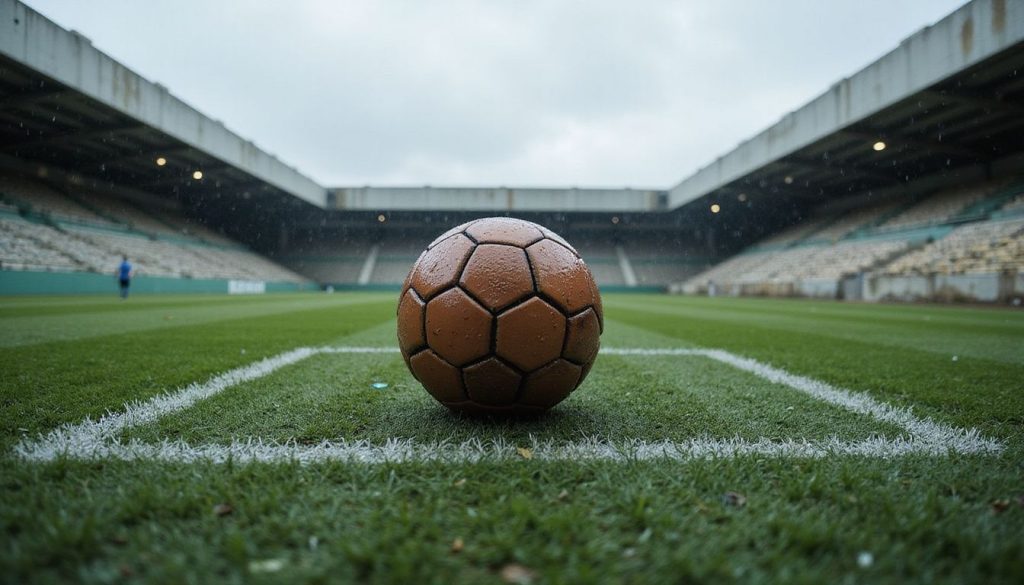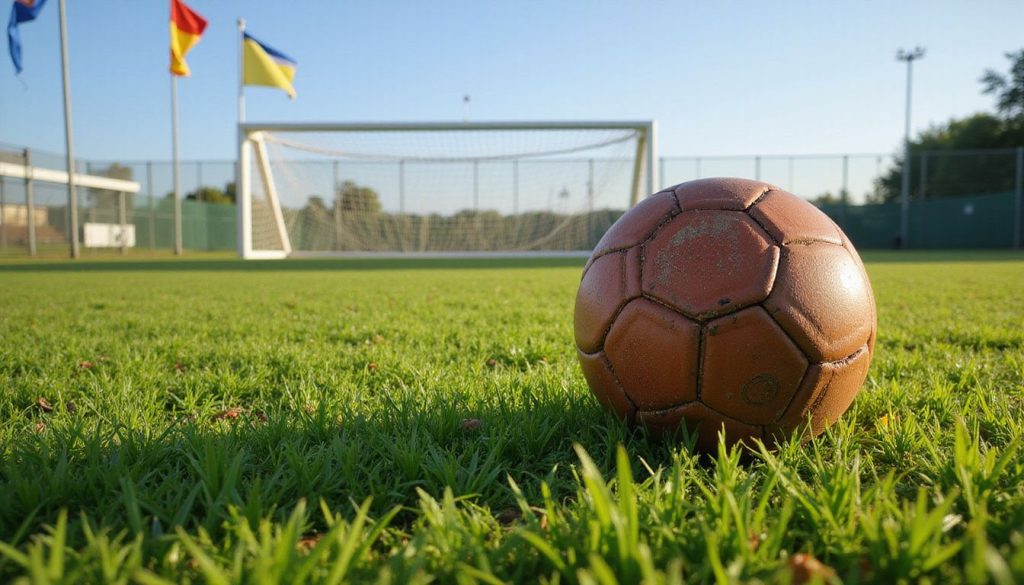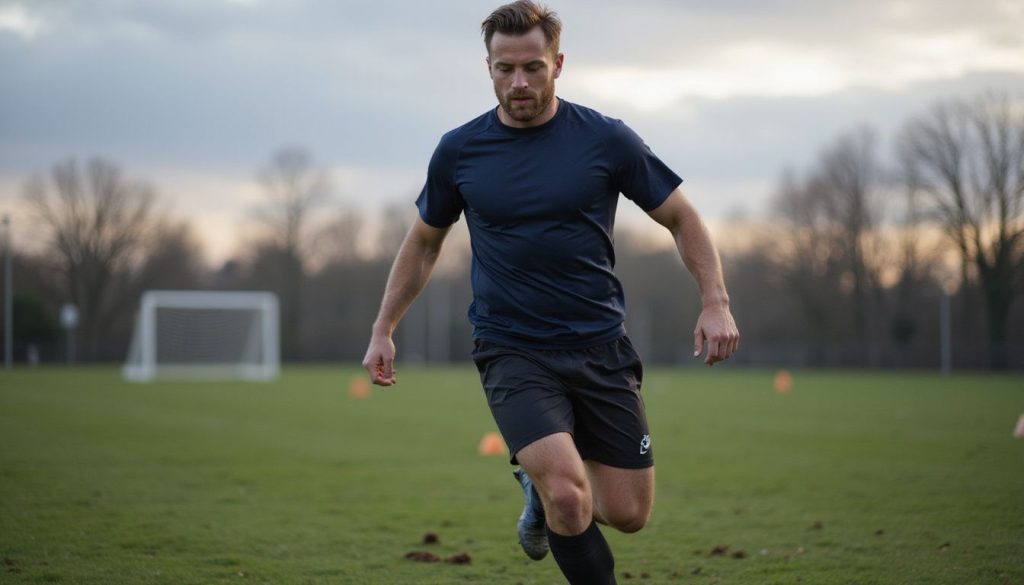Football Positional Awareness Drills
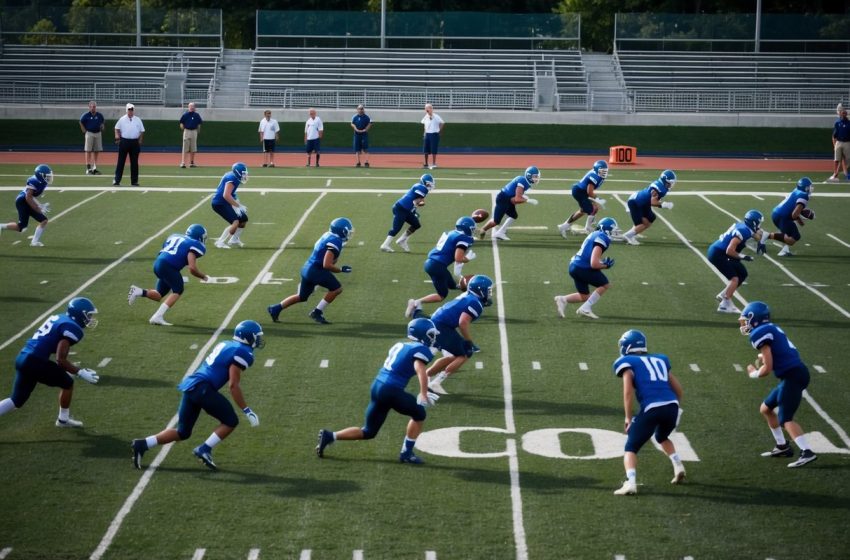
Football Positional Awareness Drills: Boosting Game Sense and Team Play
Learning about football positional awareness can help you play smarter and make better decisions on the field. Players who understand where to be and when to move can support their teammates, stay open for passes, and defend more effectively. Positional awareness drills are easy ways to practice these skills and improve your whole team’s performance.

You don’t have to be a pro to start. Simple drills let you learn your responsibilities in different positions so you know your area on the pitch. Working on these exercises will help you find space, move quickly, and react to where the ball and other players are.
By making positional awareness part of your football training, you can build confidence and play a bigger role during matches. Whether you’re just starting out or looking to improve, these drills can make a real difference in your game.
Fundamentals of Positional Awareness in Football
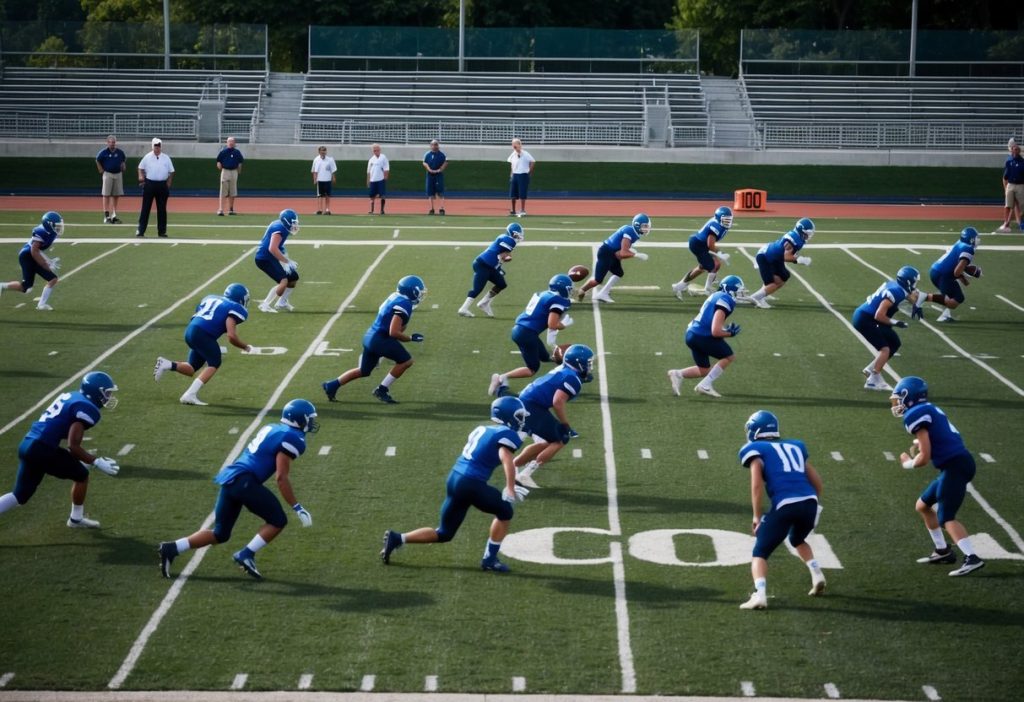
To play well in football, you need more than just basic skills. Understanding how to move, where to be, and how to work with your teammates makes a big difference in every game.
Understanding Positioning
Positioning is about knowing your role on the field and staying aware of your place. You should always look around to see where your teammates and opponents are. This helps you decide where to move next.
Good spatial awareness lets you find open space and makes it easier to receive passes. When you see a gap or open area, move there to give your team more options. You also need to understand when to stay wide, drop back, or push forward.
Strong positioning improves your decision-making. If you are in the right place, you can react faster and play the ball more effectively. Here are a few questions to ask yourself during play:
- Am I helping my team keep its shape?
- Can I move to a better space?
- Where are the defenders and attackers right now?
When you stay aware of your surroundings, you make it harder for the other team to break through.
Tactical Principles in Positional Play
Tactical awareness means following your game plan and working as a unit. In positional play, you and your teammates use areas on the field to stay organized both in defense and attack. Common principles include keeping your shape, staying compact as a team, and supporting the ball carrier.
When attacking, spread out to stretch the other team’s defense. Create triangles and passing lanes, so your team has more choices with the ball. When defending, move as a group. Stay close enough to help each other, but not so close that you leave players open.
Making quick decisions is easier when you understand the team’s tactics. If the plan is to press high or drop back, position yourself to help the group. Communicate with your teammates, so everyone knows where to be.
Working on these tactical principles every session builds teamwork and helps you become a smarter player on the pitch.
Essential Drills for Developing Positional Awareness

Improving positional awareness in football requires targeted drills that focus on passing, movement, organization, and decision-making. By working on these key areas, you can boost both individual and team performance during matches.
Passing and Movement Drills
Passing and movement drills help you understand where to be on the pitch and how to keep the ball moving. Try drills where you pass the ball to a teammate, then move into space to receive a return pass. For example, the “pass and follow” drill involves players forming a line, passing to the next person, and running to take their place.
Working in triangles is effective. Three players pass the ball around while moving and changing positions. This helps you create and use space, improving both technical skills and spatial awareness. Focus on taking a quick look before receiving the ball to know your next move.
Train both feet to control and pass the ball. Emphasize proper body positioning so you can turn in different directions. Quick passing, combined with smart movement, helps maintain possession and keeps the defense under pressure.
Small-Sided Games for Awareness
Small-sided games, such as 3v3 or 4v4, force you to make quick decisions while under pressure. The reduced space means you must find ways to create space and stay open. These games put a spotlight on movement, communication, and technical ability.
Small-sided matches improve your awareness of where teammates and opponents are. Use these games to practice shifting positions, supporting the ball carrier, and spotting scoring opportunities. Limited numbers increase your participation and touches on the ball, which is key for learning.
To make these drills more intense, add extra rules. For example, limit the number of touches per player or reward teamwork and off-the-ball movement. These changes encourage smart positioning and faster decision-making.
Defensive Organization Drills
Defensive drills help you understand team shape and how to hold your position when defending. Start with simple shape exercises where defenders stay in line and shift side to side as a unit. This teaches you to keep your spacing and mark opponents properly.
Work on pressing drills by breaking players into two teams. The defending team tries to win the ball back by pressing high and working together. Emphasize talking to teammates and recognizing when to step out or stay back.
Practicing different formations helps you react to changes during a match. These drills boost your decision-making and ensure you know where to be when your team doesn’t have the ball.
Attacking Positioning Exercises
Attacking drills let you practice finding space in the opponent’s half. Work on patterns where midfielders and forwards combine with short passes and quick movements, such as overlapping runs and give-and-goes. Focus on timing your runs into goal-scoring areas.
Set up exercises that put you in shooting or finishing positions after movement across the box. Practice reading the play so you’re in the right spot to finish a cross or rebound. Look for open gaps behind the defense to exploit.
Spend time on drills that train you to recognize when to hold your position and when to move. Communicate with teammates and adjust your runs based on where the ball is and how the defense reacts. This will help you create better scoring chances for your team.
Integrating Physical and Technical Training

Building strong positional awareness in football means training your body as well as your mind. You improve faster when you focus on fitness, agility, strength, and endurance along with your technical skills on the ball.
Agility and Speed Drills
Agility and speed are key for reacting quickly and changing direction during matches. Ladder runs, cone shuffles, and zig-zag sprints help you develop fast reflexes and better footwork.
Try using short bursts of speed followed by quick stops, such as 10-meter sprint intervals, which simulate real game movements. This type of interval training increases your versatility and stability in difficult situations.
You can also use the following drills to build agility and speed:
- Box jumps for explosive power
- Shuttle runs to improve reaction time
- Quick-feet drills around cones to build coordination and balance
Focusing on these areas sharpens your movement when shifting positions or chasing the ball.
Strength and Endurance Conditioning
Strength and endurance help you stay durable throughout the whole match. Bodyweight exercises like push-ups and squats build stability and support your core muscles.
Strength training, such as resistance bands or light weights, makes your muscles tough enough for challenges and tackles. For young players, focus on higher repetitions with lighter weight to lower the risk of injury.
Endurance is built with longer runs, repeated sprints, or small-sided games that keep your heart rate up. Try mixing steady-paced runs with short sprint intervals. This combination boosts your fitness and helps you keep a high level of play from start to finish.
Innovative Methods to Enhance Positional Awareness

Modern football training is using new tools to help players understand space, movement, and tactics. These fresh methods can boost your awareness and shape how you see the pitch.
Virtual Reality and Video Analysis
Virtual reality (VR) lets you step into real-game situations without being on the field. You can replay matches, pause the action, and see from different angles. This helps you notice open spaces and your own positioning, making it easier to learn from mistakes without extra physical stress.
Video analysis is a big part of tactical training at professional clubs and academies. Coaches show clips of your performances and compare them to elite players. You can study player movements and see how spacing and timing affect a match.
Key focus areas:
- Watching your off-the-ball runs
- Spotting spaces and gaps
- Understanding pressing shapes
Sports scientists often use both VR and video to make sessions more effective. By seeing yourself and others in actual games, you build a sharper sense for where you need to be.
Using Technology in Training Sessions
Many training sessions now include wearable trackers and GPS vests. These devices record your distances, speeds, and heatmaps. After a drill, coaches can give feedback on whether you stayed in shape or moved into the right pockets of space.
Some academies use smart balls with sensors to monitor passing accuracy and movement. Your position on the pitch is tracked and assessed to ensure you are following tactical instructions.
A simple table trainers use comes from this data:
| Metric | What It Shows |
|---|---|
| Heatmap | Areas you cover most |
| GPS path | Your movement patterns |
| Positional errors | Times out of position |
Using technology like this gives you fast, clear feedback to help you understand your positioning in real time or right after drills. This makes your improvements more focused and less guesswork.
Supporting Youth and Team Development
Helping young players build strong positional awareness supports their teamwork skills and lets your team grow in both skill and confidence. Training must include structured learning, as well as a focus on health and safety to ensure each player can participate fully.
Workshops and Youth Academies
Workshops and academies give you a chance to introduce young players to key football concepts, such as spatial awareness and teamwork. In these settings, your players join training sessions designed to teach them how to read the flow of the game and choose the best positions.
Coaches use games, drills, and small-sided matches to teach kids where they should stand, move, and support each other. These sessions give every player plenty of touches on the ball while developing communication and trust between teammates. This leads to better decision-making during real matches.
Youth academies often run on a set budget and make careful use of resources, using simple equipment like cones, poles, and bibs. By repeating positional drills, players start to understand their roles on the field, and you foster a strong sense of team bonding and stability.
Safety and Injury Prevention
Focusing on safety during positional awareness drills keeps your players healthy and able to learn. It’s important to teach proper warm-up and cool-down routines at every training session to reduce the risk of muscle strains and injuries.
Coaches must show how to move safely in space and avoid collisions during close-contact drills. Remind players to keep their heads up and be aware of others’ positions. This not only improves play but also helps prevent accidental trips and falls.
Use modified drills that lower impact, especially for younger athletes. Encourage open communication, so if anyone feels pain or discomfort, they speak up right away. Taking these steps creates a safe, fun learning environment while reinforcing the importance of teamwork and care for each other.
Frequently Asked Questions
Helping your players understand field positions and movement can build their confidence and teamwork. Drills and tips below support skill growth at different ages and ability levels.
How can coaches teach positional awareness to youth players in football?
You can start by giving each player a clear position and explaining their area of responsibility. Walk through the field layout and use cones or markers to show boundaries, like the halfway line for forwards. Use simple instructions and let them ask questions.
Encourage kids to spread out and talk about why occupying space matters. Show them what happens if they are too close to each other during play.
What are effective situational awareness drills for football players?
Set up grid-based games where players must find space and keep track of defenders. Use drills that require scanning the field and making quick decisions, such as small-sided games or passing drills under pressure.
Try split-second “freeze” moments, where you ask players to point out teammates or open space. This helps them get used to checking their surroundings.
What are some age-appropriate soccer positioning drills for young athletes?
For younger children, use games that keep them moving and thinking. Try “sharks and minnows” or tag-style games that focus on finding space. Simple possession games with clear rules about areas to stay in can help.
You can also play basic 3v3 or 4v4 matches, where every child has a chance to see how spacing affects the game.
Can you share strategies for improving a player’s in-game football positioning?
Encourage your players to scan the field before they receive the ball. Remind them to notice where their teammates and opponents are. Use video clips or live feedback during games to show good positioning moments.
Give players goals for each match, like maintaining width or staying in their assigned zone. Praise them when they show good awareness.
How do position specific soccer training sessions vary for different roles on the field?
For defenders, focus on holding the line, marking attackers, and watching both the ball and player movement. Midfielders should practice scanning wider areas and supporting both defense and attack.
Forwards can work on timing runs and exploiting open space near the goal. Goalkeepers might focus on communication, staying aware of defenders, and reading the game.
What are key factors to consider when developing U12 football tactics?
At this age, promote fair playing time, simple formations, and clear roles. Encourage everyone to try different positions so they learn the whole game.
Focus on teaching spacing, teamwork, and communication. Make sure the tactics match their skill level, keeping it fun and challenging without being overwhelming.

